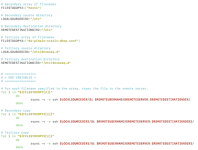From what I understood, by default there's no root password. Have you added one?
Correct, by default there isn't a password on the root user. Setting one is the same as setting a password for any other user. So you just need to do the following when logged in as pi or whatever user you normally use which is allowed to sudo:
Also, I seem to recall that root login is disabled as well, have you enabled it?
It's not disabled in that the user account is disabled but the SSH daemon is set by default to not allow root logins using the password. To change that edit /etc/ssh/sshd_config. Look for the line that contains PermitRootLogin, by default I think it looks like this:
Code:
#PermitRootLogin without-password
Note the # at the beginning so that's make that entire line just a comment. Remove the #. If you wanted to login as root using public/private keys then the line is now correct. If you want to login using the password over SSH then change without-password to yes. Save the file and either restart sshd (the command /etc/init.d/ssh restart will do it, or just reboot the box)
Sorry for all the questions, I like to comprehend what I'm doing and why.
Ask away

Also, not that it's relevant but my secondary Pi-Hole box isn't a Pi, it's an Ubuntu 18.04LTS virtual machine but the basics of Raspbian and Ubuntu are pretty much the same.


 )
)
 Any good ideas for smart home, security or other interesting apps?
Any good ideas for smart home, security or other interesting apps?